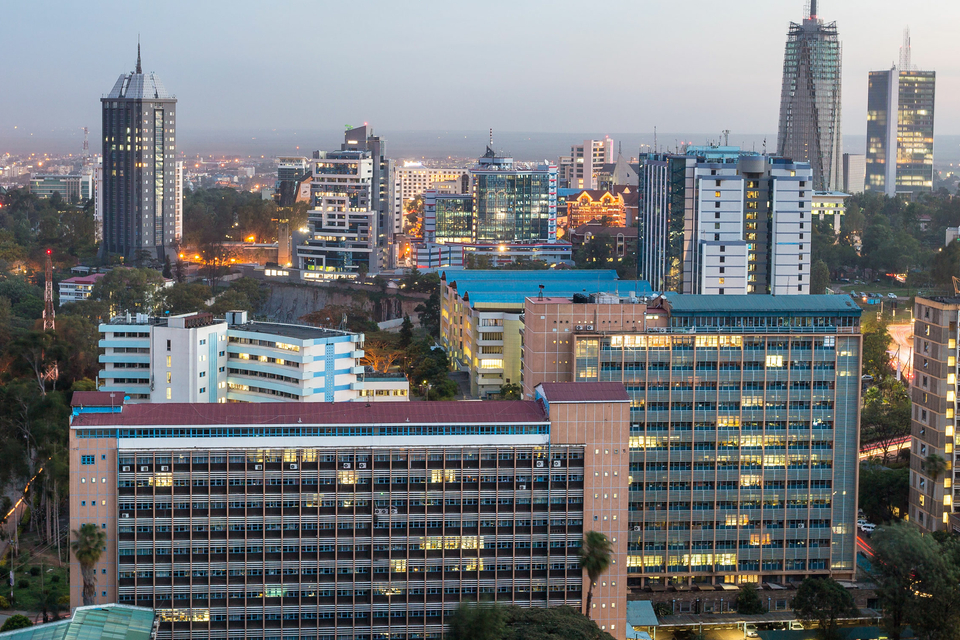Warranties and indemnities insurance take center stage in M&A transactions in Africa
Driven by M&A activity, warranties and indemnities insurance for deals in Africa has grown significantly during the past decade

It is with great pleasure that I present this latest edition of Africa Focus, the inaugural issue under my leadership of White & Case's Africa Practice Group. This edition delves into key topics that are crucial for understanding the evolving landscape of investment in Africa. Our lead article explores the critical role of warranties and indemnities in African mergers and acquisitions (M&A), a topic that is essential for expanding the investor base on the continent. Following this, we provide an insightful analysis of Special Economic Zones (SEZs), highlighting their importance as mechanisms for attracting investment, fostering economic diversification, and enhancing trade. This discussion also touches on the beneficiation of raw materials into finished products before export, a vital step for adding value within African economies. Finally, the third article in this series examines the significant changes underway in competition and antitrust law across Africa. These developments, characterized by a surge in new legislation and shifts in enforcement practices, are reshaping the regulatory environment and creating new dynamics for businesses operating in the region.
Driven by M&A activity, warranties and indemnities insurance for deals in Africa has grown significantly during the past decade

An overview of special economic zones and how African countries can use them to drive economic growth

The competition laws in various African countries have been rapidly evolving, with some countries enacting new laws or proposing revisions while some African leaders are joining forces to develop antitrust policies


Driven by M&A activity, warranties and indemnities insurance for deals in Africa has grown significantly during the past decade
*Rowley Higgs (Partner, HWF) and Munal Mehta (Director, HWF) co-authored the publication.
In most M&A transactions, after the parties have negotiated the basic commercial terms, they then negotiate the warranties and indemnities (W&I). Generally, buyers want the anticipated value of their purchase without any surprises after the deal closes. For this reason, some buyers often require extensive warranties eliciting certain disclosures from the sellers that can either be indemnified or result in a portion of the purchase price being retained as collateral until the identified issue is resolved. Sellers seek a clean exit, particularly where there is a private equity seller who requires that the transaction proceeds move upstream to limited partners in its fund(s). Moreover, these negotiations can be fraught, especially when the requested scope of W&I includes unknown risks or risks outside the sellers' control, delay deal execution and even become dealbreakers.
W&I insurance, which covers breaches of representations, warranties and tax covenants that are made during a transaction, can mitigate these issues. For buyers, this provides assurance that a debtor is solvent in the event of a breach, which enables the buyer to be compensated. For sellers, it facilitates an exit that is free and clean of contingent liabilities. Buy-side policy, which is the more common form of insurance, can also address situations where a buyer deems a seller's protection insufficient. For instance, when the liability cap is lower than what the buyer requires, or if there are doubts about the seller's financial ability to handle claims. Sell-side policy offers protection to sellers against claims from buyers for innocent misrepresentations made in the W&I (see Figure 1).
W&I insurance coverage limits seldom exceed 20 to 30 percent of the purchase price, with premiums ranging from just over one percent of the purchase price for South African deals and up to two percent for deals in other African countries. It is unusual for the insurance cost to exceed one percent of the purchase price, which is less than the typical advisory costs and makes an attractive deal that might have otherwise failed a worthwhile investment. Given the current high interest rates, especially in African markets, the cost of insurance may be offset significantly by the savings achieved by not having a significant amount of the purchase price retained in escrow for a certain period of time.
In contrast, pricing for current European deals is usually below one percent. There are two reasons why insurance costs for African deals tend to be higher than deals in Europe and the United States. First, insurers view transaction risks for African deals higher than for deals in Europe and the United States due, in part, to regulatory regimes being less developed in Africa. The second reason is fewer W&I insurance providers service African deals, so there is less competition among them.
Nonetheless, appetite for W&I insurance for African deals has grown substantially during the past decade and is likely to continue to grow. This growth has been driven by, among other factors, private equity investments in M&A insurance markets driving more aggressive business development and increased competition in European W&I insurance markets, which have depressed the premium amount insurers can charge in those markets. The slowdown in M&A activity in more established markets has also prompted insurers to seek new opportunities in Africa. As a result, we have seen a significant increase in the number of active W&I insurers in recent years. Fees are becoming more competitive and coverage is more widely available, making W&I insurance attractive for a broader range of African transactions and more jurisdictions offering insurance coverage.
W&I insurance is intended to cover unknown risks. Issues discovered during due diligence are not covered in the policy. Known risks are customarily addressed in the indemnities or through a purchase price adjustment. The coverage and exclusions are typically tailored to each deal and mapped against the terms of the purchase agreement. In Africa, there are certain common exclusions such as bribery, corruption and expropriation of land and assets (as discussed below).
Moreover, W&I insurance has been frequently used for minority acquisitions, new share subscriptions and joint ventures. These types of transactions are particularly suitable for insurance coverage because they often involve ongoing investments within the business, reducing the clarity of recovery in case of an insurable event.
Contingent risk insurance, an insurance product designed to cover known low frequency and high-severity legal risks identified in a transaction, is complementary to W&I insurance. It allows the parties to reduce or remove exposure to the identified risk, whether it is specifically addressed in the W&Is. Contingent risk insurance is becoming increasingly popular in Europe, either in unlocking deals or backstopping valuation assumptions; it still needs to be developed in Africa.
Interest in W&I insurance is growing in a variety of business sectors in Africa, including:
However, riskier sectors and sociopolitical or geo-economic concerns can still put certain transactions beyond the reach of W&I insurance. For example, insurers declined to insure a transaction involving a conglomerate of regulated utilities operating in several West African jurisdictions. The parties could not agree on the terms.
Even where W&I insurance is viable, insurer appetite varies considerably throughout the continent's markets. For example, the South African market is well-established and therefore, attracts a broader selection of insurers and thus, more favorable terms. In North Africa, awareness of W&I insurance is increasing, with transactions in Morocco, Tunisia and Egypt regularly covered by the W&I market. And interest is also growing in Algeria. Generally, assets based in the larger economies in East Africa are coverable and attract cheaper rates than those in North Africa. W&I insurance has recently been applied to deals involving targets in Kenya, Uganda, Rwanda, Tanzania, Ethiopia and Mozambique and to pan-African deals with targets having operations in multiple jurisdictions. Essentially, few African jurisdictions remain beyond the scope of insurers. And the more benign the sector is perceived to be (for example, renewable energy), the more countries in which deals will be insurable.
Increased interest in M&A in Africa from the global insurance community has also led to improvements in the protections offered. Historically, underwriters sought to apply a broader range of specific exclusions. For example, they were concerned about issues such as expropriation of land and shares and anti-bribery and corruption. Now, some insurers no longer require these exclusions, making the W&I insurance products more attractive to investors. In addition, insurers believe the quality of due diligence is improving and have started to identify local counsel to assist them with this underwriting. Sophisticated underwriters are also working to educate themselves on local laws and regulations to differentiate risks to allow for broader coverage.
Tax coverage remains an important focus area. In certain jurisdictions, the insurance industry views the tax authorities as aggressive and believes there is uncertainty regarding the application of the rules. Moreover, where insurers have pending claims in a particular country, that might also prevent them from offering coverage in that country.
While insurers continue to broaden their coverage for deals in Africa, the underwriting processes for these deals is typically more detailed than it is for deals in Europe and the United States and the list of general exclusions is usually longer, with purchasers increasingly asking sellers to stand behind any material coverage gaps under a W&I policy. Sellers seem willing to accept this position. However, as African markets mature and more insurers offer W&I insurance products and the perceived gaps in the W&I policies narrow, it remains to be seen whether purchasers stand behind these coverage gaps.
White & Case means the international legal practice comprising White & Case LLP, a New York State registered limited liability partnership, White & Case LLP, a limited liability partnership incorporated under English law and all other affiliated partnerships, companies and entities.
This article is prepared for the general information of interested persons. It is not, and does not attempt to be, comprehensive in nature. Due to the general nature of its content, it should not be regarded as legal advice.
© 2024 White & Case LLP